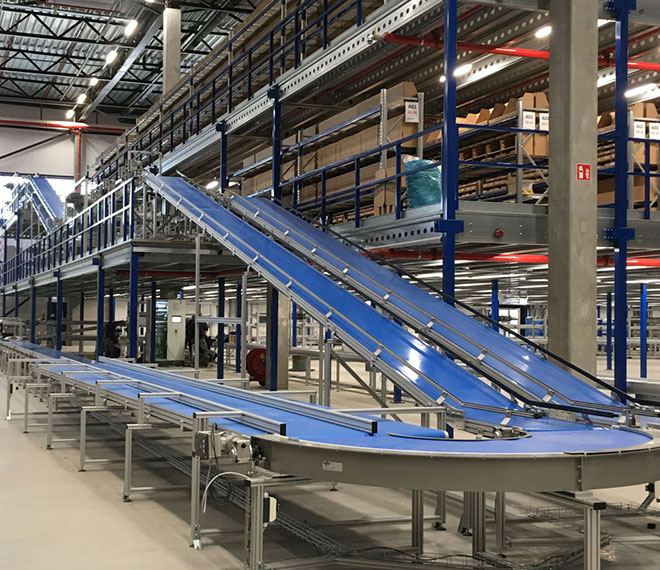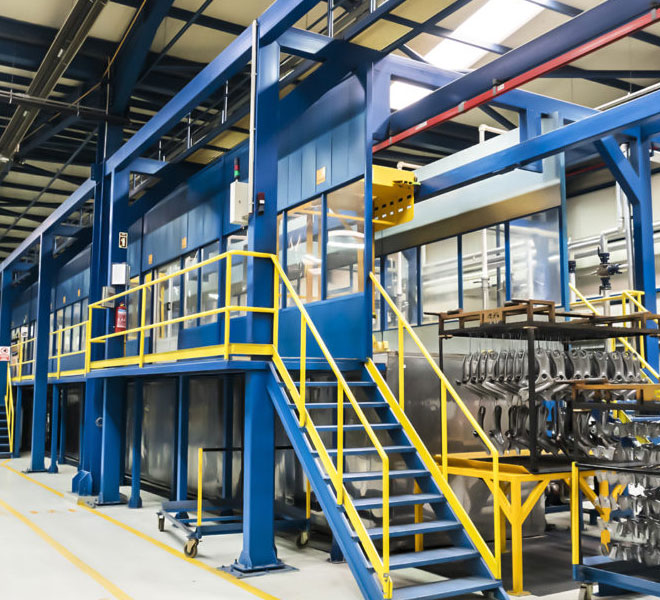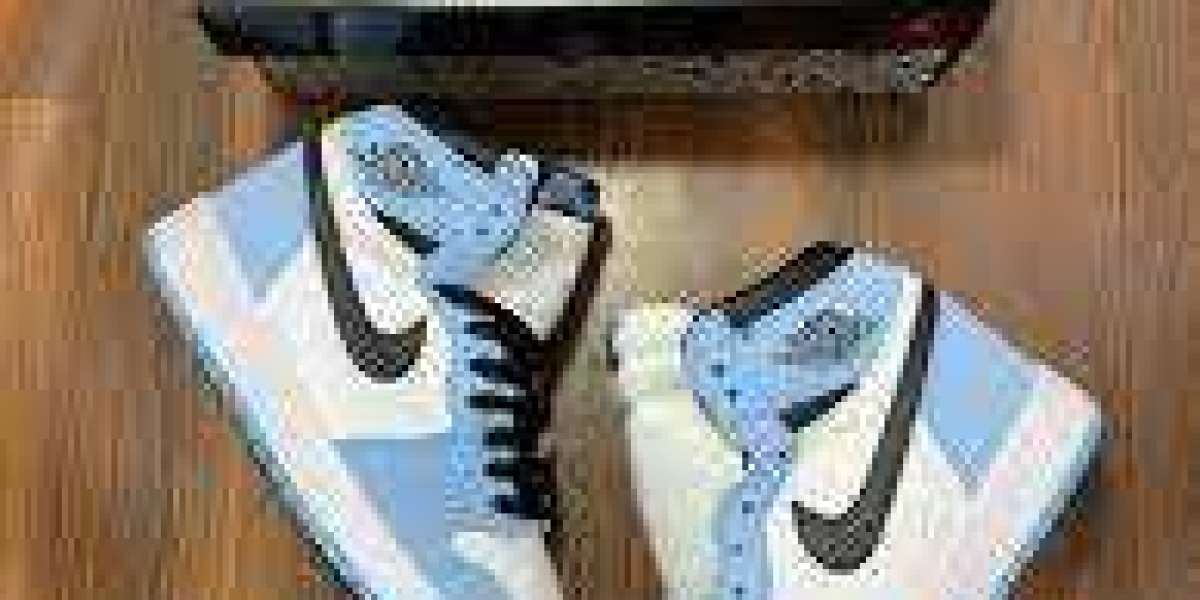When it comes to material handling, the fact that materials are transported on a conveyor system is just as important as the fact that the materials are transported on a conveyor system. Product inspection and transportation throughout your facility are two of the objectives of your conveyor system. This will not be possible for the vast majority of products, however, unless an appropriate handling system is put in place.
The operator may experience inconvenient maintenance and downtime if traditional metallic components used in conveyance systems are used for an extended period of time. Your project's overall performance is directly impacted by the operational quality of your machinery, whether the traction of your system is compromised as a result of high-volume operation, whether the system's stiffness has stiffened as a result of rust, or whether the system has become corroded as a result of exposure.

It is a common problem that the material handling industry has to deal with when a conveyor belt is not functioning properly. According to the statistics compiled by the conveyor belt manufacturing industry, the following are the four most frequently encountered conveyor belt problems:
1. Geographical information that is not accurateIn order to ensure that your system produces the output you expect it to produce, this process, also known as belt tracking, must be carried out. According to the definition, a belt tracking system is defined as the process of aligning and managing a belt in order to keep it traveling in a specific direction at all times.
A mistracking error, for example, can cause unplanned downtime, belt damage, product damage, and maintenance troubleshooting issues, to name a few of the negative consequences. Mistracking can have a variety of consequences, including belt damage, product damage, and maintenance troubleshooting issues, amongst other consequences. Uneven belt wear and system failure can result from a belt deviating from its normal track, in which case the belt will need to be replaced entirely.
Second, and equally important, is the issue of belt slippage, which needs to be addressed immediately.
If the tension on your conveyor belts is either too low or too high at any point in time, it is possible that the performance of your operations will suffer. Increased belt stretching, audible squeals, and slippage of the conveying system are caused by a lack of sufficient traction to grip the belt as a result of normal wear and tear on the head pulley during normal operation. A consequence of this is that the belt breaks free from the head pulley, as well as causing the belt to break free from the head pulley. When performing extensive maintenance, a significant amount of time and effort is required to remove buildup, increase wrap on the drive pulley, or adjust the tensioning requirements.
Use the current situation to your advantage by taking advantage of the current opportunityIn order to move objects away from their original positions, rollers are one type of roller that can be used. Rollers are one type of roller that can be used to move objects away from their original positions.
Conveyor belt systems have traditionally been constructed entirely of metal components, such as steel, in order to address the issues raised previously. Things, on the other hand, are beginning to shift in the right direction. It is possible for the sharp edges of these rollers to develop after being immobilized for an extended period of time. This will cause the belt to track unevenly along the center line, which is not desirable in most situations. Because of the incident, there is a risk that the materials or packages being transported will be damaged, which raises even more concerns about the safety of the workers involved. When your belting system fails completely, you will almost certainly be forced to shut down your operations for an extended period of time.
Furthermore, there are roadblocks at every turn that must be navigated around in order to proceed.
When it comes to conveying material throughout a system, one of the most important functions of a conveyor belt is to ensure that the material moves as quickly and efficiently as possible while still maintaining quality. If this occurs, it is possible that all manufacturing will be halted completely, effectively bringing the entire operation to a grinding halt. If the materials or parcels being transported come into contact with sharp edges, are forced to undergo rigid directional changes, or are forced to pass along a corroded chute surface, the accumulation of materials and the formation of blockages may occur. It is possible that the materials or packages that are being transported will become clogged as a result of this situation. Failure to address a conveyor belt problem, whether it is a blockage or another type of issue, as soon as possible will almost certainly lead to a loss of several hours of production time and thousands of dollars in non-recoverable expenses, both of which can be extremely costly.

A high-resolution image of a conveyor belt is represented by the filename conveyor belt. jpg, which stands for conveyor belt in high resolution and denotes that the image is of a conveyor belt in high resolution. A low-resolution image of a conveyor belt is represented by the filename conveyor belt. jpg, which stands for conveyor belt in low resolution and denotes that the image is of a conveyor belt in low resolution. Use of aftermarket solutions for conveyor belt systems can help you get the most out of your conveyor belt system if you take advantage of the options that are currently available to you.
Although replacing the individual component parts of the conveyor belt to resolve these issues appears to be a straightforward solution, the reality is that these issues are frequently recurrent and that replacement of the individual parts will be required on an ongoing basis in the foreseeable future. In the event that you've dealt with any of these or other issues in the past, you're probably already aware of how important it is to maintain the overall quality of the individual components that make up a manufacturing operation's overall structure in order for it to function properly. It is possible to replace metal conveyor belt systems with non-traditional plastic injection molding solutions that are both less expensive and more environmentally friendly than traditional metal conveyor belt systems.
Instead of being made of two or more materials with distinct properties that combine to form a strong bond without completely dissolving into one another, advanced composites, as opposed to traditional composites, are made of two or more materials with distinct properties that combine to form a strong bond without completely dissolving into one another. Traditionally constructed composites are constructed entirely of the same material as traditionally constructed composites. In a wide range of industries, advanced composites are used, for example, in the aeronautical, automotive, and aerospace-related industries, to name a few examples. The materials used to make advanced composites differ from those used in traditional composites, which are made up entirely of the same material. Instead, advanced composites are composed of two or more materials with distinct properties that combine to form a strong bond without completely dissolving into one another. Composite materials are used in the construction of aircraft because of the extreme strength of their anti-wear properties, which make it impossible for components made of composite materials to rust or corrode. These materials, which are frequently a combination of polymers, are strong and long-lasting; however, they are still flexible enough to allow for simple readjustment and maintenance of their aesthetic appearance, despite their durability and strength. Because of their water and heat resistance, composites are capable of handling a wide range of materials efficiently and without being damaged.








